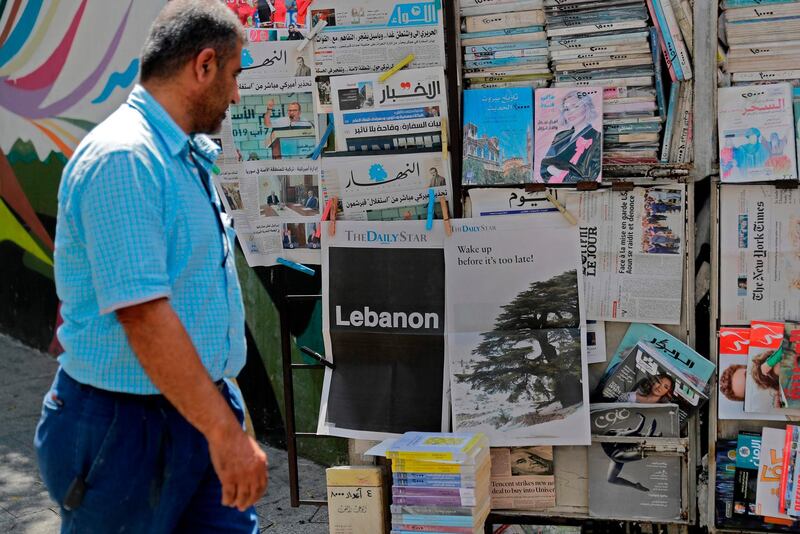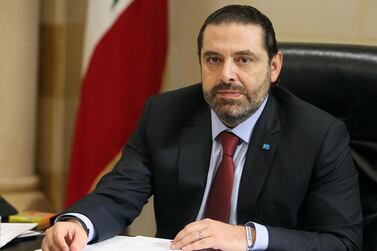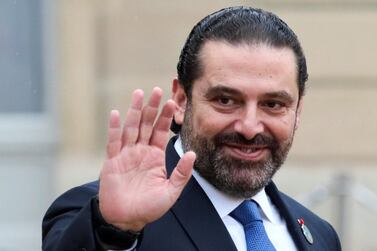Lebanon's sovereign debt rating has been steadily deteriorating over the past five years while credit default swap rates have sharply risen, nearly doubling over the last year. Lebanon's government debt ratio is about 160 per cent, the third highest in the world, and projected to cross 170 per cent by 2023, according to the International Monetary Fund, unless there is a sharp fiscal correction.
While Lebanon has never defaulted on its obligations, it is in distress territory. Currently, Lebanon is rated Caa1 by Moody’s, and a B- rating with a negative outlook from S&P and Fitch. Analysts expect a further downgrade of Lebanon's debt rating to CCC junk territory by S&P this week, signaling vulnerability to non-payment. Why did Lebanon get here?
After several months of internal haggling, Lebanon's coalition government prepared a self-described "austerity budget" promising to sharply cut the budget deficit from 11.2 per cent in 2018 to 7.6 per cent in 2019. Parliament went further, approving a budget with a promised budget deficit of 6.6 per cent.
However, successive governments have persistently failed to achieve targets: the 2018 budget deficit target of 8.4 per cent of GDP ended up at 11.5 per cent instead. The assumptions underlying the 2019 budget fly in the face of reality: projected growth is an ambitious 1.2 per cent in 2019, while actual estimates are hovering at 0 per cent and last year’s budget forecast growth at 3.43 per cent was an actual 0.2 per cent. Given anemic growth and lack of policy credibility, government revenue targets from revenue-raising measures (like an increase in tax on interest income, tax on imported goods and increased general security fees) are unlikely to be realised. The IMF, in its July 2019 Article IV assessment, disclosed the government’s initial budget plan would reduce the cash-basis fiscal deficit to only about 9.75 per cent of GDP.
What underlies a downgrade?
Successive governments have been fiscally reckless, with an average budget deficit of 8.4 per cent of GDP since 2010, while real growth has been a miserly 1.8 per cent and falling. Government borrowing finances current spending (public sector wages, salaries, pensions subsidies and interest payments), not to finance investment or support the private sector.
Debt service interest now represents over 50 per cent of government revenue; wages and pensions account for over a third of total spending and subsidies to the grossly inefficient Electricité du Liban are running at about 10 per cent of total spending. The result has been a large buildup of debt, failing infrastructure and logistics, without a build-up of real assets in terms of physical or human capital.
The high levels of government domestic borrowing along with high interest rates have led to a ‘crowding out’ of the private sector, leading to a sharp decline in domestic credit and investment resulting in dismal economic growth. Similarly, the high rates paid by the Banque du Liban (BdL) through ‘financial engineering’ operations aimed at shoring up international reserves, raise the cost of government debt and crowd out the public sector. Banks prefer to deposit at the BdL rather than risk lending to the private sector or to government.
In the past 18 months, interest rates have been ratcheting upwards to compensate investors for the growing fiscal risks. The move also aims to attract deposits and portfolio investments from the Lebanese diaspora to protect the overvalued exchange rate and finance the high current account deficit - 27 per cent of GDP in 2018 and averaging 24 per cent since 2010.
However, deposit inflows have been declining and capital outflows have been accelerating in 2019 as investors lose confidence, leading to a widening of the current account deficit. In turn, the deficit is exacerbated by the overvalued exchange rate which encourages imports, while making exports noncompetitive.
The higher interest rates increase the cost of government financing resulting in growing interest payments and higher budget deficits, creating a vicious circle. This raises the issue of debt sustainability: the ability of Lebanon to meet its debt obligations without requiring debt relief or accumulating arrears.
As long as the real interest rate exceeds the real GDP growth rate, the debt-to-GDP will continue to rise unless the primary budget balance (excluding interest) is in significant surplus. In order for Lebanon to stabilise the debt ratio (assuming current interest rates remain unchanged), deep fiscal reform is required to generate a primary surplus of between 4.5 percent to 6 percent (2018, -0.02 percent).
The bottom line is that Lebanon has been borrowing to consume in excess of its means. The twin budget and current account deficits are unsustainable. A downgrade from S&P would be a clear warning shot of the immediate need for policy reforms.
Underlying the worsening macroeconomic picture are the severely dysfunctional domestic politics, state capture, bank regulatory capture and endemic corruption leading to waste and inefficient spending and subsidies that prevent concerted efforts at credible reform. A deteriorating regional geopolitical situation including prospects of an Iran war and tighter sanctions on Hezbollah add fuel to the fire.
What needs to happen vs what is likely to happen
The credit downgrade will raise Lebanon's risk profile with investors leading them to divest from Lebanese paper, resulting in an increase in expected yields (this adjustment has partly happened given market expectations of the downgrade). Lebanese banks have large exposure to sovereign debt (local debt and Eurobonds) - some LBP 55 trillion (Dh133.9 billion), almost double the LBP 30trn capital base of the banking system. A credit downgrade implies a market loss on the value of domestic banks' holdings of Lebanese assets (holdings of Eurobonds and sovereign paper), an increase in their risk-weighted assets, requiring a corresponding increase in capital adequacy ratios and an increase in capital by shareholders. Investors will require higher yields on Lebanese assets and depositors higher interest rates on deposits (whether in LBP or foreign currencies). In turn, this will increase the cost of borrowing, aggravate future deficits and raise the debt to GDP ratio.
Absent strong policy adjustment and reforms starting with the 2020 budget, investors will want to flee from Lebanese assets leading to a 'sudden stop' of capital inflows, rising outflows, making default more likely and threatening the exchange rate peg. The downgrade will deepen Lebanon’s fiscal crisis and unless government, policy makers and the politicians react with the required deep reforms, the country will have to knock on the door of the IMF to impose discipline.
The alternative is to undertake swift and front-loaded fiscal and structural reforms: expenditure cuts via reducing the size of the public sector, undertaking public-private partnership projects, privatisation, as well as adjustment of utility prices for electricity and water, adjusting petrol prices to international levels, in addition to debt re-profiling. The choice is between market-imposed painful adjustments or self-imposed reforms that are credible and sustainable. The question is, is the political class ready for these difficult choices and is there political courage and capacity for reform?
Dr Nasser H Saidi is an economist and a former minister of economy & trade, minister of industry and former first vice governor of the Central Bank of Lebanon. He is also the founder and president of the economic advisory and business consultancy Nasser Saidi & Associates








